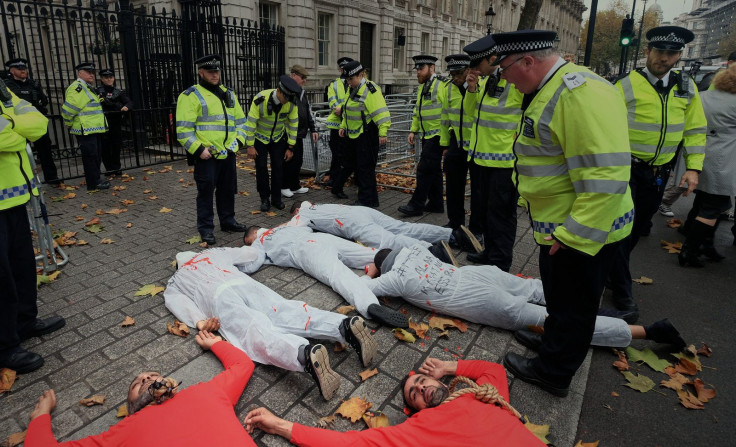Handling Police Brutality: Classifying Police Killings As Public Health Information Could Help Control Them

Police-citizen relations are at a boiling point here in the United States, and that’s putting it lightly. People (mainly of color) are being killed by police in droves, but many people would never know because these statistics don’t get to see the light of day. A recent study conducted by researchers from the Harvard T.H. Chan School of Public Health has found that classifying police killings and police deaths as public health information is not only constitutional, but it could also help keep up with trends and prevent future deaths.
Visit any major health care organization’s website, including the Centers for Disease Control and Prevention, and you would be hard-pressed to find any data on law enforcement-related deaths, which includes both people killed by police and police killed in the line of duty. While the CDC does account for violence-related deaths, the research team insists resistance from police departments has resulted in the lack of data on police killings.
"It is time to bring a public health perspective to this longstanding and terrible problem, from a standpoint that emphasizes prevention and health equity, as opposed to treating these data as if they solely belong to the police and are a matter of criminal justice only," said Nancy Krieger, professor of social epidemiology and lead author of the study, in a statement.
Krieger and her colleagues proposed that the number of law enforcement-related deaths each year in the U.S. be treated as both criminal data and a “notifiable condition” similar to poisoning, pertussis, and polio. Novel data presented by the research team argues that African-Americans have faced a significantly higher risk for being killed by police compared to whites over the past 50 years.
Back in 1965 when the Race Relations Act was passed, making it the first legislation in the United Kingdom to address racial discrimination, black men between the ages of 15 and 34 were eight times more likely to be killed by police compared to white men in the same age group. While this unsettling gap among races and ethnicities that face excessive levels of police brutality has narrowed in recent years, blacks are still three times more likely to be killed by a police officer.
While public health officials and medical professionals fail to report law enforcement-related deaths here in the U.S., The Guardian launched “The Counted” in June 2015. Using information gathered by news outlets, research groups, reporting, and submissions from users, “The Counted” is able to report on the number of people in the U.S. killed by police in real time.
"It is stunning that we in the United States must turn to a UK newspaper website for timely and detailed reporting on deaths due to police violence," Krieger said.
According to data compiled by “The Counted,” over 500 people in the U.S. were killed by police between Jan. 1, 2015 and June 9, 2015. This was twice the amount of deaths that were expected based on the FBI’s estimates. That death toll reached 1,000 as of Nov. 16, 2015. Among the most dangerous cities for blacks in America, a black person’s risk for being killed by police ranged from five to nine times higher than whites between 1960 and 2011 in New York and Cleveland.
Source: Chen J. Waterman P, Kiang M, Feldman J, Krieger N. Police killings and police deaths are public health data and can be counted. PLOS Medicine. 2015.



























